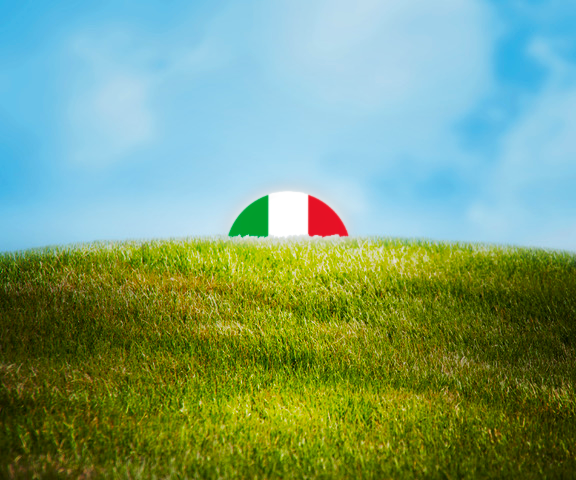1. Italy = AgriFood
Italy is the third market in Europe (after France and Germany) both in terms of market size (60 million consumers) and in terms of agricultural production (about 55 billion euros). Food is deeply rooted in the Italian culture and internatioal brand and Italy is the EU country with the biggest Association of Farmers (1.5 million members). The country is the largest EU producer of many different types of fruit and vegetables, rice and durum wheat. Also, Italien farmers are leaders in Europe in terms of revenue from secondary activities: renewable energy production, farm holidays, farmers’ markets etc.
The total turnover of Italy’s agriculture and food industry is approx. 200 billion € and Italy is the EU country that creates the greatest added value. Food exports increased by almost 7% in 2019, further confirming the role of this industry as a driver of national growth and international Made in Italy ambassador. If we include also distribution and catering, the total turnover of the value chain amounts to 538 billion € and 3.6 million employees. We are looking at a huge, broad and competitive industry to collaborate with.
2. Tradition for biodiversity, food safety, organic production and product certification
Italy has almost 5,000 typical products, that have been approved and controlled by regional authorities for decades. About 300 regional specialties and 400 wines have been approved and certified at EU level. This contributes to creating continuity for regional products, landscapes, production methods, recipes, traditions, culture and tourism. In addition, 50,000 organic farms have been approved by the EU and organic production represents 15.5% of total agricultural production, more than double the EU average.
Italy is among the leading EU countries in terms of food safety and control. Internationally, Italy is fighting the large parallel market of “Italian sounding products”, an unfortunate consequence of the high value associated with the Made in Italy brand. New technologies (digitization, blockchain) now enable solutions that guarantee transparency along the entire value chain representing one of the great business opportunities for the industry in the coming years.
3. Italy is an important importer of agricultural products
Despite Italy’s strong position, the value of imports exceeded the value of exports in 2018. The country is far from self-sufficient, especially when it comes to raw materials and ingredients for the food industry, meat, fish, oil, fats and dairy products. A large part of the Italian territory is covered by mountains, hills and coastal areas making it impossible to increase the cultivated, agricultural area. The country therefore depends on imports, and generally looks favorably on reliable trade partners able to comply with rules and guidelines.
4. Climate change creates the need for new ways of thinking
The Italian consumer favors fresh, seasonal products. Producers are often small family businesses, which limits the ability to plan and negotiate price agreements with retailers. This can result in over-production, price discounts and food waste which – in addition to being a problem in itself – reduce the industry’s earnings and investment possibilities.
Furthermore, problems caused by extreme weather (tornadoes, floods, violent hailstorms, droughts, frosts and temperature increases) are increasing. Climate change not only provokes direct damages of wasted production but also indirect damages due to dramatic changes in the natual cycle of plants and animals. Southern European countries are strongly affected by climate change: eg. the risk of desertification in Italy is estimated to be so great that the cultivated area could be reduced by as much as 20%! Water, an already critical resource, will become even more so in the future! Great challenges lie ahead and significant resources are already being allocated to innovation, new technologies and new partnerships to drive the necessary change in the food industry.
5. Innovation and digitization
Innovation is increasingly linked to automation and digitalization, not yet an integral part of Italian agriculture. There is still a lack of knowledge about the possibilities offered by new technologies, specific skills and innovative business models. Puglia, one of the largest agricultural regions in Italy, is facing a necessary diversification after most of the olive trees in the region have been affected by the Xylella virus. At the same time, there is a risk that large amounts of European funds available for transformation and innovation remain unused, and therefore return to the EU. This is an example of the great need for innovative products, solutions and services that can accelerate and realize the industry’s transformation.
In conclusion, there is a huge potential for products and solutions in the Italian food market, both in agriculture, which remains a main employer in many Italian regions, and in the food industry, which embraces a very wide range of product categories and reaches around 60 million national consumers!
I look forward to reading your comments, objections, or questions!


